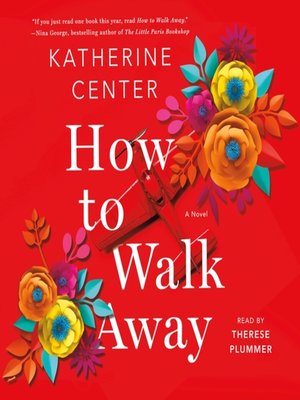

The two of them develop a special bond, that also feels very fragile for the circumstances in which they've met. There's also physical therapist Iain - a Scottish giant of a man who wears crankypants constantly and pushes Maggie and her belief in herself. She's not only trying to get her altered body to cooperate, but she's juggling a fiancee (maybe?) who's gone off the rails, a pushy mother, understanding father, and her estranged sister Kitty who has flown home from New York to nag her sister into healing, apparently. Six-weeks is all that her insurance company will cover, so that's why it's such a tight timeline and very focused on her rehabilitation (which rings true for American healthcare systems, and I found quite moving in and of itself). The book is very concentrated on the six weeks that Margaret 'Maggie' begins physical and occupational therapy, once she's well enough to grasp her new situation and start working towards rebuilding her life.

'How to Walk Away' details that very woman whose life was so utterly altered by one accident - Margaret Jacobsen who has to have skin-graft surgery and may have paraplegia below the knee forever. This pinged for me, because I thought it sounded like one of Center's previous books and - lo! - it was indeed.

Cassie in 'Fire' wonders what became of that woman, that she can't quite fathom the ways her life was altered from that moment on. An accident that happened within a few hours of her boyfriend proposing - the boyfriend who was the pilot and walked away from the crash without a scratch.

In 'Fire' the firefighter protagonist Cassie references one particular call out that stayed with her a woman badly burned and with a spinal injury after being involved in a light aircraft accident. Having just finished Center's 2019 book 'Things You Save in a Fire' - I went back to this 2018 title because they're *kind of* linked.


 0 kommentar(er)
0 kommentar(er)
